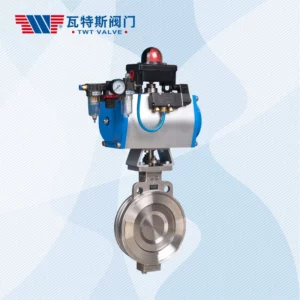High Performance Butterfly Valves (HPBV) are commonly used in a variety of industries for controlling and regulating the flow of fluids.
Some of the industries that use HPBV include:
- Oil and gas industry – HPBVs are used in pipelines, refineries, and processing plants for controlling the flow of crude oil, natural gas, and other fluids.
- Power generation industry – HPBVs are used in power plants for regulating the flow of steam, water, and other fluids in various applications.
- Chemical and petrochemical industry – HPBVs are used in chemical and petrochemical processing plants for controlling the flow of various chemicals, acids, and other corrosive fluids.
- Water and wastewater treatment industry – HPBVs are used in water treatment plants, wastewater treatment plants, and distribution systems for controlling the flow of water and other fluids.
- Food and beverage industry – HPBVs are used in food and beverage processing plants for regulating the flow of liquids, such as fruit juices, syrups, and other ingredients.
- Pharmaceutical industry – HPBVs are used in pharmaceutical processing plants for controlling the flow of liquids and gases during the production of drugs and other pharmaceutical products.
- HVAC industry – HPBVs are used in heating, ventilation, and air conditioning systems for regulating the flow of air and other gases.
Overall, HPBVs are widely used in industries where precise and reliable control of fluid flow is critical for efficient and safe operation.
Are High Performance Butterfly Valve fire safe?
High Performance Butterfly Valves (HPBV) can be designed to be fire-safe, but not all HPBV are inherently fire-safe. China High Performance Butterfly Valve manufacturer Fire safety is an important consideration for valves used in industries such as oil and gas, chemical, and petrochemical, where the risk of fire and explosion is high.
To make a HPBV fire-safe, several design features can be incorporated, such as:
- Fire-resistant seals: HPBV can be fitted with fire-resistant seals to prevent the leakage of flammable fluids in the event of a fire.
- Extended stem: The valve stem can be extended beyond the insulation to keep the stem packing cool and prevent it from being damaged by high temperatures.
- Fire-safe materials: Valves can be made from fire-resistant materials such as stainless steel or high-temperature alloys to resist deformation or failure in high-temperature environments.
- Fusible links: Fusible links can be installed to activate the valve in the event of a fire, allowing the valve to close automatically.
It’s important to note that fire-safe design features may add to the cost of the valve, and not all HPBV manufacturers offer fire-safe designs. Therefore, it is important to consult with a qualified valve manufacturer or supplier to ensure that the valve you select is appropriate for your specific application and meets your fire safety requirements.
